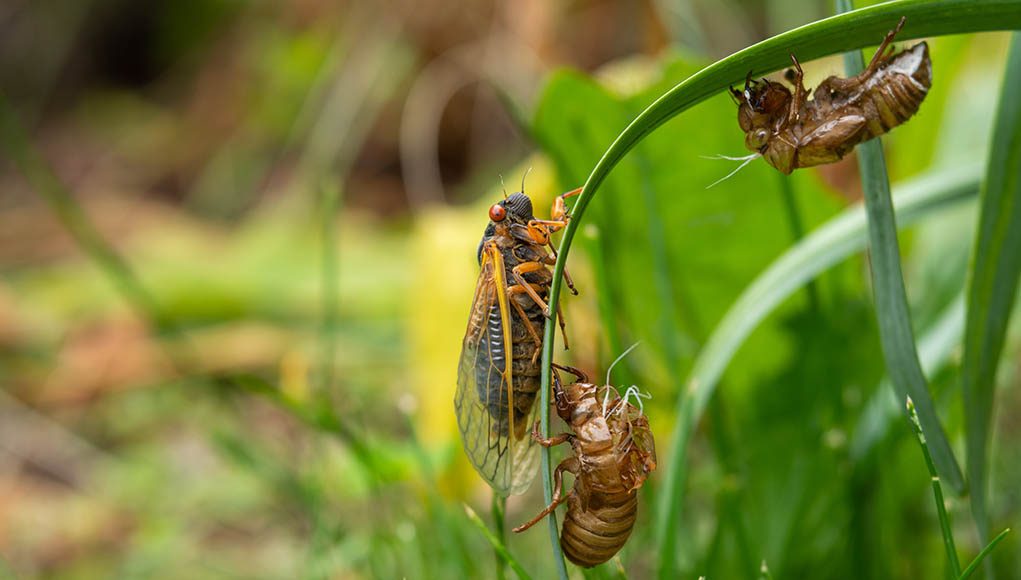The cicada season has come after 17 long years of hibernation. And now you found your dog digging into the ground, gorging on a vast buffet of these red-eyed bugs. Can dogs eat cicadas?
What should you do?
They don’t sting or bite. But should you let your dogs feed on cicadas?
In this article, we’ll discuss the questions:
- What is a cicada, and is it dangerous for dogs?
- What should you do if your dog eats cicada?
- And how can you stop your dog from eating cicadas?
If you’re worried about cicada eating and its effect on your dogs, you’ll benefit from today’s guide.
So, let’s dig into the wonders of cicadas and uncover its mystery.
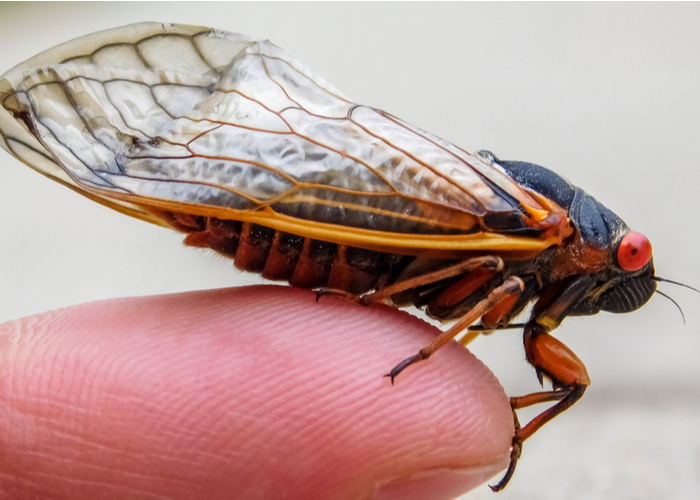
What is Cicada?
Cicadas are sound-producing insects with two pairs of membranous wings, stout bodies, and large compound eyes.
There are over 3,000 cicada species, which fall into two main categories – the annual, which emerges every spring, and periodical, which comes out after 13-17 years of being dormant.
Unlike locusts, they don’t decimate and consume crops, and they don’t bite or sting at all.
According to entomologists, cicada swarms can be as great as 1.5 million per acre. And the sound of enormous swarms of singing cicada can reach 96 decibels, loud enough to drown a motorcycle’s sound.
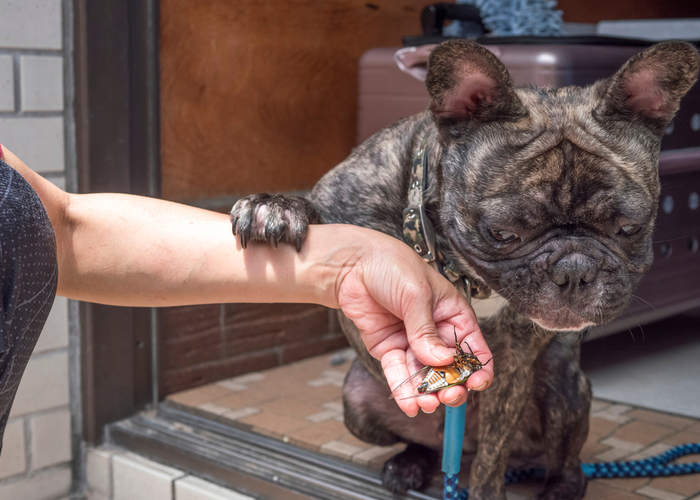
Can Dogs Eat Cicadas?
Cicadas are edible for humans, and the Brood X breed- the largest of 12 broods with a 17-years life cycle is said to taste like shrimps. But what about our four-legged companion?
Dogs could not usually discern palates, and they might mistake the infestation of a gazillion of cicadas for an unlimited bug buffet.
The good news is, cicadas are not poisonous or toxic for dogs. So, dogs can eat cicadas but only at a minimum intake. One or two cicadas would not be a big deal.
Even other animals like squirrels and birds feed on them.
But you should look out if your dog ingests too much because if it consumes bugs in high volumes and outside their usual diet, it can wreak havoc in their stomach.
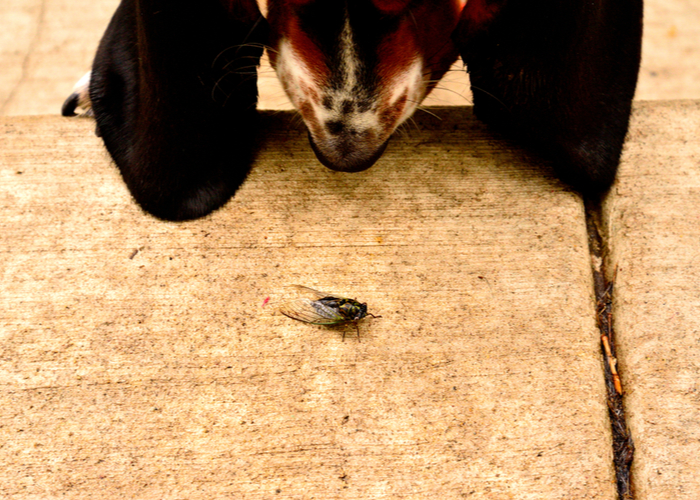
Effects of overindulging when dogs eat cicadas:
Too much intake of cicada poses many threats to your fido, including:
Gastrointestinal inflammation
The crunchy shell of cicadas is tempting. But overeating bugs like them can irritate the stomach lining that may lead to inflammation and stomach ache.
Vomiting
Due to an upset stomach and inflammation, a dog may also vomit and become lethargic. Its vomit may contain cicadas which can be disgusting and make you feel sick as well.
Diarrhea
The irritation of the intestinal tract also triggers dietary indiscretion or diarrhea.
Allergic reaction
Insects like cicadas are biologically similar to crustaceans like shrimps. So, these bugs can trigger allergic reactions if your dogs have shellfish allergies like anaphylactic shock.
It’s a severe allergic reaction that occurs within a few seconds or minutes after the exposure to an antigen – the substance that causes the allergic reaction.
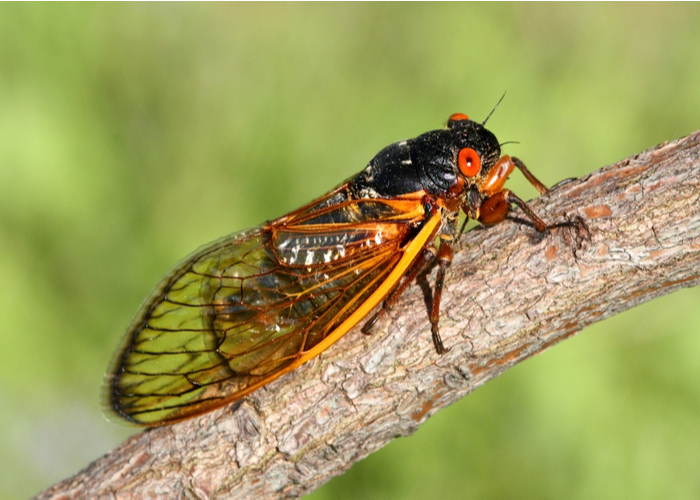
How to Prevent The Urge For Dogs Eat Cicadas?
Experts recommend keeping your dog away from cicadas to avoid health issues that may emerge from eating this type of bug.
Here are some helpful tips on how to prevent your fido from eating this type of bug:
Distract your pets when they’re outside
When cicadas emerge, they seem to be anywhere you look, from the trees to the ground.
Since they fly slow and stay low to the ground, dogs can easily catch and gobble them.
So, when you’re walking outdoors with your dog, try to distract it by giving treats or keeping it away from cicadas.
If your dog is snooping around your yard during this season, you may use the game of fetch to distract it or give it a command.
Supervise when outdoors
You’ll need to look after your fido if you let it go outdoors, especially if you’ve recently sprayed your yard with pesticides.
That’s because cicadas may contain pesticides on them once they emerge, which is dangerous for a dog and can make it very sick.
Keep your pet indoors.
The safest way to protect your pet during cicada season is to keep it indoors as much as possible.
To make the indoor time fun and more inviting, you have to give your dog some toys and spend a lot of quality time with them.
Four to six weeks of staying indoors are no big deal during this time of pandemic since we spent most of our time inside our home for more than a year already.
Therefore, it is certainly doable.
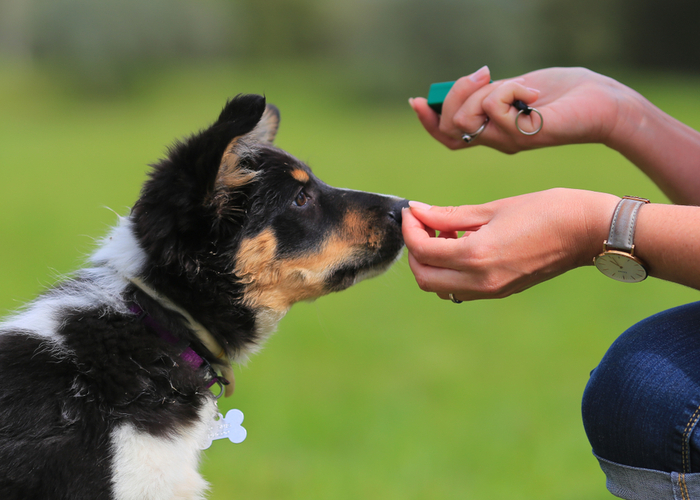
Dogs Eat Cicadas: Training Your Dogs With “Take It” and “Leave It” Command
If you want to up your game in preventing your pup from eating cicadas, you need to teach your pet that not everything that’s on the ground should be grabbed.
But how will you teach your dog to ignore dropped items, including insects like cicada?
Training your dog with the “leave it” command is what you need. Its goal is to develop automatic behavior of not taking an item from the ground and ignoring it without being asked.
And the best way to develop such self-control is to start with the “take it” cue.
Teaching the “Take It” Command
You can teach your dog the “take it” cue through a free-choice exercise. It can help your pup know when to eat something.
It’s essential, especially for grabby fidos who snatch food or treats from your hand. The exercise can help them identify if something is okay to eat or not.
All you need for this exercise are some high-value treats and a clicker if you have one. It would be best to do this in a quiet place with limited distractions.
Here are tips on how to do it:
Step 1. Introduce the treat in a closed fist
Get a treat and put it in your fist. Then, let your dog try to get it out of your hand by licking, pawing, or sniffing it.
Step 2. Say the cue
Once your dog leaves your fist alone, mark the moment with a clicker and say “yes” or praise word. Then, open your fist and give the cue “take it” as you offer the treat.
Step 3. Repeat the exercise
Repeat it several times until your dog learns to ignore the treat. Wait for a few seconds before cueing “take it” and offering the food.
Step 4. Test in an open palm
This time, put the treat in your open palm. Close your fist if it’ll try to get the treat and wait for your pup to behave and ignore it, then say “take it” and offer the food.
These steps will teach your dog that ignoring the treat is the way to get it.
Teaching the “leave it” command
If your dog ignores the treat in your open palm until the “take it” cue is pronounced, that means that your pet understands the concept of leaving things alone until permission is given.
Now it’s time to take the matter to the floor where insects like cicadas nestle and introduce the “leave it” cue.
Step 1. Teaching dogs to sought for better rewards
Put the treat on the floor, then cover it with your hands. Like the first step for the “take it” command, let it try to get the food. And once it behaves and ignores, mark the moment with your clicker and give the reward.
But, don’t use the treat on the floor. Instead, reward your pup with something from the other hand or pocket that’s of a higher value.
That’s because this time, your dog needs to know that it isn’t about getting something eventually. Instead, it will emphasize that leaving certain things alone leads to high chances of getting better rewards.
Step 2. Helping it learn when to leave it
Observe if your dog is voluntarily leaving the covered treat alone, then start removing your hand. You have to prevent your pet from getting the food at all costs.
So, be ready to cover it if your sneaky fido tries to reach out for it.
Your dog should learn to ignore the uncovered treat on the floor, so observe if it’s showing disinterest in the uncovered food by leaning back or looking away.
And if it does, mark it and give a higher value treat from your other hand as a reward.
Step 3. Repeating the exercise while on a leash
Now, repeat the same exercise while standing up, and your dog is on a leash. And this time, cover the dropped treat with your foot.
The primary purpose of the leash is to keep your dog from getting the food in case you accidentally miss or kick it away.
Step 4. Adding the “leave it” cue
If your dog now automatically ignores the food you drop into the floor, that means you successfully taught him/her how to have impulse control.
So, you can now add the “leave it” cue whenever you drop the food. Mark and reward your dog again with an extra special treat if it’ll ignore the food on the floor.
After several repetitions, your pup should be able to know the meaning behind the “leave it” cue. But that doesn’t end there. It’s time to apply it to the real world.
Applying the “leave it” command in real world
Hazards are present everywhere, from the cicadas in your yard to spoiled sandwiches and garbage on the ground.
Therefore, you need to train your fido to pass anything that should be ignored.
Step 1. Get some low-value treats and place them in a row along the ground with space five feet apart. Then, instruct your dog to “leave it” and walk past the food.
Mark and reward your pup again every time it passes a food, one step at a time.
Cover the food with your foot if ever it tries to get the treat.
Step 2. After successfully walking past an entire row of treats, reward your pet with a special chew bone or a game of tug.
Then, do the same exercise in different locations like your yard or sidewalk. Your dog will learn to respond wherever you are if you’ll expose it to other places while executing the “leave it” command.
You can also replace the food with other things like chew toys and tennis balls and repeat the cue. It can help your pup generalize the signal from treats to stuff you don’t want your dog to grab.
What to Do If Dogs Eat Cicadas?
If, despite trying your best, your sneaky dog still wants to get a handful of cicadas, here are some tips on responding to such situations.
Limit your fido’s cicada intake
If your doggo still insists on eating cicada, try to limit its intake and not let it gobble them up.
One or two at a time isn’t that bad for them but as it munches on a cicada, try to drive others away. If it tastes terrible for your pet, it will no longer eat and will even spit it out.
Watch out for signs of Gastrointestinal issues.
If your dog gets sick after eating cicada and starts to vomit and suffer from diarrhea, that could be a sign of a gastrointestinal issue.
But the good news is it’s temporary and can be treated by medication.
Some pets may also suffer from intestinal blockage due to overindulgence in cicada. Although cases like this are rare, they can lead to frequent vomiting and require intensive veterinary treatment.
Look out for any allergic reaction.
There are only a few cases of pets who suffered from an allergic reaction after eating cicada, but you still need to watch out for signs of anaphylactic shock to ensure your fido’s safety.
The symptoms include:
- pale gums
- cold limbs
- trouble in breathing
- excessive drooling
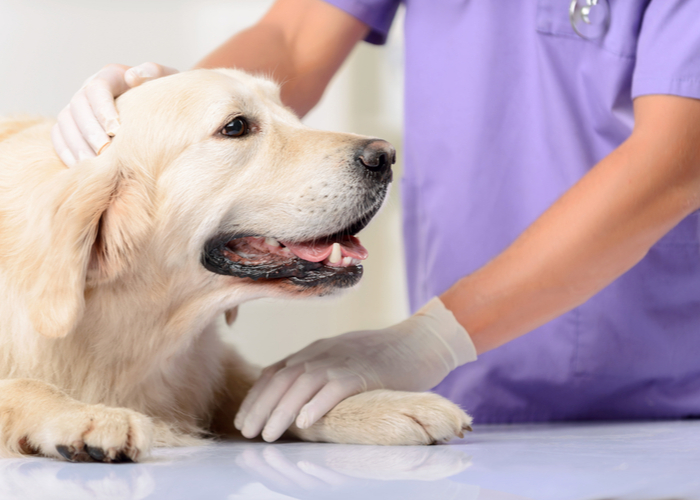
When to Bring Your Dog to the Vet Over Cicada Eating?
If you notice that your pup frequently vomits or there are signs of an allergic reaction due to over ingestion of cicada, then you shouldn’t take matters into your own hands. It would be best to consult your veterinarian and have your dog examined.
Your dog will have to receive some medications and treatment for the symptoms, but it will usually be fine.
Where Do Cicadas Nestle?
Cicadas can be found throughout the world, but the periodical breeds are unique to North America, and they are spread across eastern and central regions of the USA.
They primarily live underground for around 13-17 years, feeding on sap from tree roots, twigs, and branches.
And after 17 years of lying a foot or two in the ground, they usually come out when the soil temperature reaches 65°F (18°C) and shed their shells.
Then, male cicadas will look for a lover to mate with through a high-pitched song, and the female ones will lay their fertilized eggs in tree branches before dying.
The moment the eggs hatch, the nymphs fall into the ground and burrow themselves underground to restart the almost 2-decade long cycle.
There are 15 different broods of cicada or groups of these insects that emerge simultaneously.
And the most anticipated one for 2021 is the Brood X, which started coming out a few days ago.
Spring is also their mating season, and they’re stretching from Washington, DC to 15 other states, including:
- Ohio
- Tennessee
- North Carolina
- New York
- Western Illinois
- Southern Michigan
- Delaware
- Georgia
- Indiana
- Kentucky
- Maryland
- New Jersey
- Pennsylvania
- Virginia
- West Virginia
So, if you’re living in these states, it would be best to look after your dogs to prevent them from overindulging in this tempting buffet.
How Long Does Cicada Live on the Ground?
Cicada spends most of its time under the ground, and it can only live in the outside world for around four to six weeks.
Dogs will spend the short and sweet time they have in the outside world primarily on mating, and after that, they’ll be gone by the end of June.
So, while constantly attending to your pets to make sure they’ll not overeat can be pretty exhausting; it won't take so long, and the ground will be free from cicadas again.
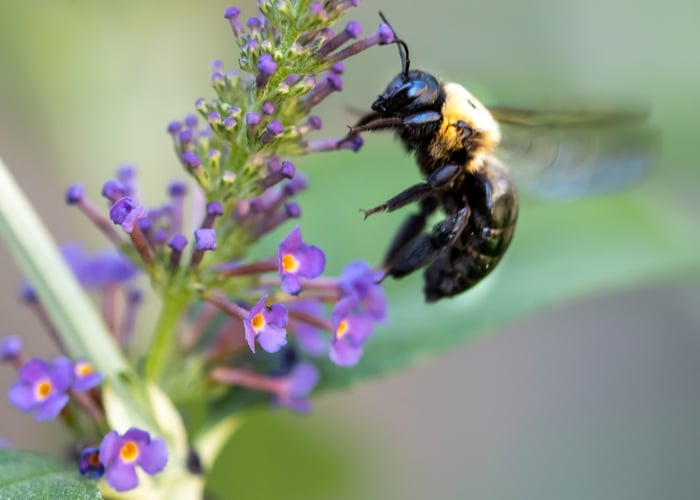
Other Buzzing Insects That May Harm Your Dog
Aside from cicadas, other buzzing insects pose a threat to your dogs, including:
Bees
Dogs love to explore by touching bees with their paws and biting them, but they will sting when cornered. Thus, resulting in painful swelling in your fido’s body. Pets may also suffer an allergic reaction to bee stings that may cause inflammation, itchiness, and other symptoms.
Wasps
These buzzing insects are more aggressive and territorial and may attack your dog using their long stinger. They are deadly, and those who are allergic to wasp stings may suffer a more severe reaction that needs immediate medical attention.
Hornets
Multiple stings from giant hornets can also become life-threatening due to their venom.
Our Takeaway When Dogs Eat Cicadas
Although cicada is not harmful itself, the threats come from overeating it. And since your dog tends to overindulge in this mysterious bug type, it would be best to keep your dog away from them.
By teaching your canine companion the “leave it” command and watching out when they’re outdoor during the cicada season, you can ensure its safety and protect its digestive health.
READ NEXT: Can Dogs Eat Buckwheat


